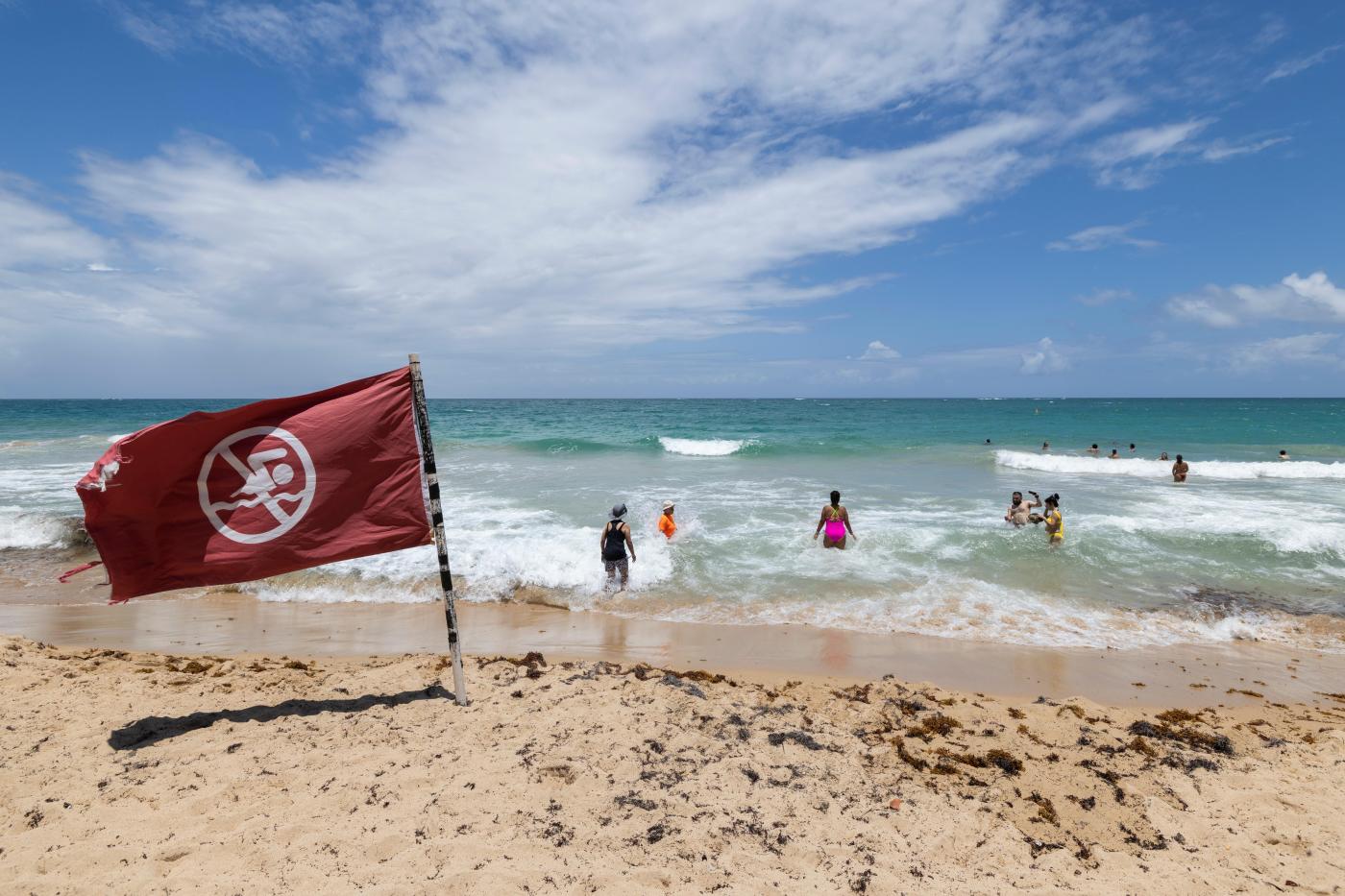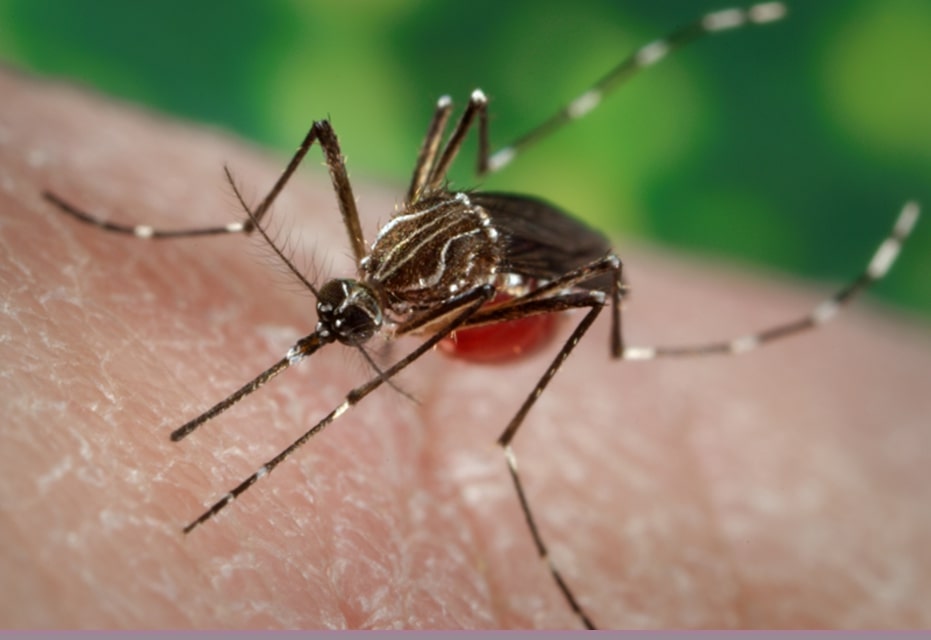By Dánica Coto and Russ Bynum | Associated Press
SAN JUAN, Puerto Rico — Hurricane Erin exploded in strength to a Category 5 storm in Atlantic waters just north of the Caribbean on Saturday, rapidly powering up from a tropical storm in a single day, the National Hurricane Center said.
While the compact hurricane’s center was not expected to strike land, it threatened to dump flooding rains in the northeast Caribbean as it continued to grow larger.
Related Articles
Rising La Niña odds point to more hurricanes in the Atlantic
Hurricane Flossie could become a major hurricane off the Pacific coast of Mexico
Erick turns rainmaker after hitting Mexico’s Pacific coast as a strong hurricane. 1 dead
NOAA predicts ‘above average’ number of storms in hurricane season starting June 1
The first Atlantic hurricane of 2025, Erin ramped up from a tropical storm to a Category 5 hurricane in a mere 24 hours. By late Saturday morning, its maximum sustained winds had more than doubled to 160 mph (255 kph).
Mike Brennen, director of the National Hurricane Center in Miami, said Erin grew into a “very powerful hurricane,” with its winds gaining 60 mph (96 kph) in about nine hours.
The Hurricane Center said Erin should begin to slowly weaken Monday as the storm encounters increased wind shear. However, forecasters predicted that it will remain a major hurricane until late in the week.
Erin close enough to land to trigger flooding, landslides
The hurricane remained a Category 5 storm Saturday evening, when it was located 135 miles (220 kilometers) northwest of Anguilla and moving west at 15 mph (24 kph). The storm’s center was forecast to remain at sea, passing 145 miles (233 kilometers) north of Puerto Rico, according to the National Hurricane Center.
Tropical storm watches were issued for St. Martin, St. Barts and St. Maarten, and the Hurricane Center warned that heavy rain in some areas could trigger flash flooding, landslides and mudslides. The Turks and Caicos Islands southeast of the Bahamas were also under a tropical storm watch.
Though compact, with hurricane-force winds extending 30 miles (45 km) from its center, Erin was expected to double or even triple in size in the coming days.
Powerful rip currents could affect the U.S. East Coast from Florida to the mid-Atlantic next week, despite the eye of the storm forecast to remain far offshore, Brennan said.
An ‘incredible’ race from tropical storm to Category 5
Hurricane specialist and storm surge expert Michael Lowry said Erin gained strength at a pace that was “incredible for any time of year, let alone August 16th.”
Lowry said only four other Category 5 hurricanes have been recorded in the Atlantic on or before Aug. 16.
The most powerful storms tend to form later in the year, with the hurricane season typically peaking in mid-September.
In October 2005, Hurricane Wilma rocketed from a tropical storm to a Category 5 in less than 24 hours, according to National Hurricane Center advisories from that time. Wilma weakened to a Category 3 hurricane before striking Florida. And in October 2007, Hurricane Felix took just over a day to go from a tropical storm to Category 5.
Including Erin, there have been 43 hurricanes that have reached Category 5 status on record in the Atlantic, said Dan Pydynowski, senior meteorologist at AccuWeather, a private forecasting company.
“They’re certainly rare, although this would mark the fourth year in a row that we’ve had one in the Atlantic basin,” Pydynowski said. Conditions needed for hurricanes to reach such strength include very warm ocean water, little to no wind shear and being far from land, he said.
Scientists say warming climate linked to storms strengthening faster
Scientists have linked the rapid intensification of hurricanes in the Atlantic to climate change. Global warming is causing the atmosphere to hold more water vapor and is spiking ocean temperatures, and warmer waters give hurricanes fuel to unleash more rain and strengthen more quickly.
Storms that ramp up so quickly complicate forecasting for meteorologists and make it harder for government agencies to plan for emergencies. Hurricane Erick, a Pacific storm that made landfall June 19 in Oaxaca, Mexico, also strengthened rapidly, doubling in intensity in less than a day.
Erin is the fifth named storm of the Atlantic hurricane season, which runs from June 1 to Nov. 30, and the first hurricane.
The 2025 season is expected to be unusually busy, with six to 10 hurricanes in the forecast, including three to five reaching major status with winds of more than 110 mph (177 kph).
In San Juan, Puerto Rico, locals and tourists walked, exercised and shopped as usual Saturday. Restaurants were busy, and despite warnings to avoid beaches, people could be seen in the coastal waters. Parents kept their children from swimming, however.
Sarahí Torres and Joanna Cornejo, who were visiting from California for a Bad Bunny concert, said they decided to go to the beach and wade into the water because the skies appeared calm.
“The weather looked fine, so we came out,” Torres said.
The U.S. government deployed more than 200 employees from the Federal Emergency Management Agency and other agencies to Puerto Rico as a precaution. Puerto Rico Housing Secretary Ciary Pérez Peña said 367 shelters were inspected and ready to open if needed.
Meanwhile, officials in the Bahamas prepared some public shelters as a precaution, as they urged people to monitor the hurricane.
“These storms are very volatile and can make sudden shifts in movement,” said Aarone Sargent, managing director for the Bahamas’ disaster risk management authority.
Bynum reported from Savannah. Georgia. Associated Press writers Isabella O’Malley in Philadelphia and Ivelisse Rivera in San Juan contributed.
___
The Associated Press’ climate and environmental coverage receives financial support from multiple private foundations. AP is solely responsible for all content. Find AP’s standards for working with philanthropies, a list of supporters and funded coverage areas at AP.org.




